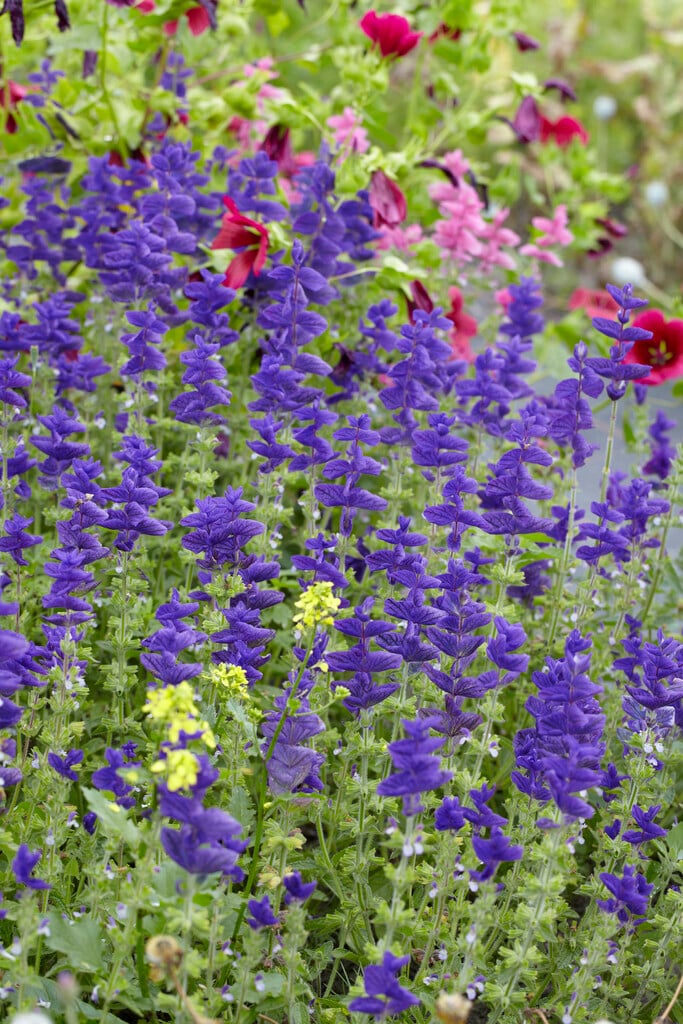Salvia viridis
painted sage
An annual sage, grown primarily not for its insignificant flower, but for the colourful bracts borne on upright stems in summer. These modified leaves are blue, pink or white. Seeds of cultivars are available in single colours or blends
Size
Ultimate height
0.1–0.5 metresTime to ultimate height
1 yearUltimate spread
0.1–0.5 metresGrowing conditions
Moisture
Moist but well–drainedpH
Acid, Alkaline, NeutralColour & scent
| Stem | Flower | Foliage | Fruit | |
| Spring | Green | |||
|---|---|---|---|---|
| Summer | White | Green Pink Purple White | ||
| Autumn | Green | |||
| Winter |
Position
- Full sun
Aspect
South–facing or West–facing or East–facing
Exposure
Exposed or Sheltered Hardiness
H5Botanical details
- Family
- Lamiaceae
- Native to GB / Ireland
- No
- Foliage
- Deciduous
- Habit
- Clump forming
- Genus
Salvia can be annuals, biennials, herbaceous or evergreen perennials, or shrubs. They have paired, simple or pinnately lobed, often aromatic leaves and 2-lipped flowers in whorls, forming simple or branched spikes or racemes
- Name status
Correct
- Plant range
- Mediterranean
How to grow
Cultivation
Enjoys a free-draining, sunny site. May need support in windy spots
Propagation
Propagate by seed in spring, either directly or in modules for planting out. Likely to self-seed
Suggested planting locations and garden types
- Cottage and informal garden
- Wildlife gardens
- Coastal
- Mediterranean climate plants
- Patio and container plants
- Flower borders and beds
- Cut flowers
- Underplanting of roses and shrubs
- Bedding
Pruning
Cut back faded flowers to encourage fresh flower spikes
Pests
Generally pest-free
Diseases
May be susceptible to honey fungus (rarely), powdery mildews, verticillium wilt and foot and root rots
Get involved
The Royal Horticultural Society is the UK’s leading gardening charity. We aim to enrich everyone’s life through plants, and make the UK a greener and more beautiful place.
